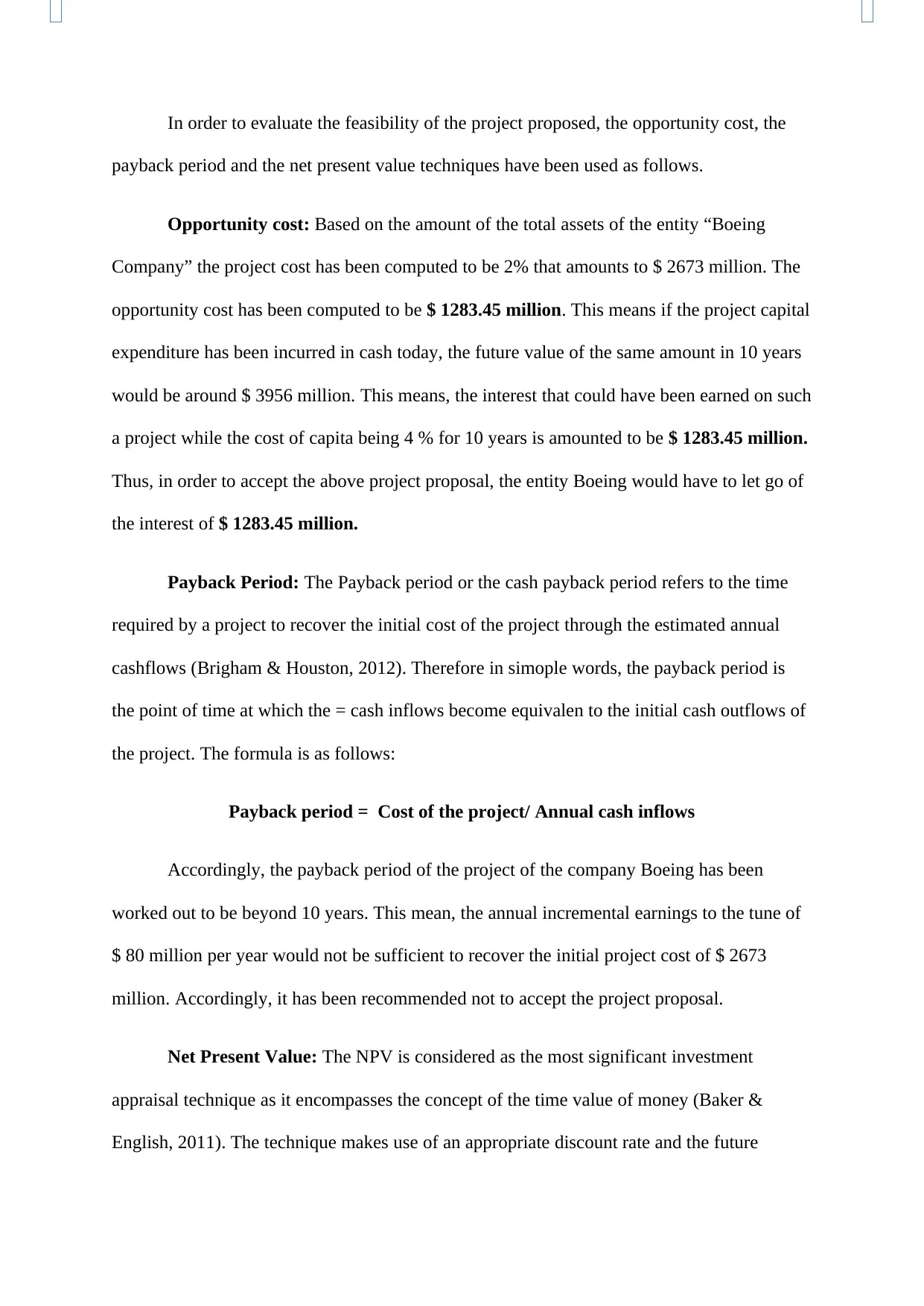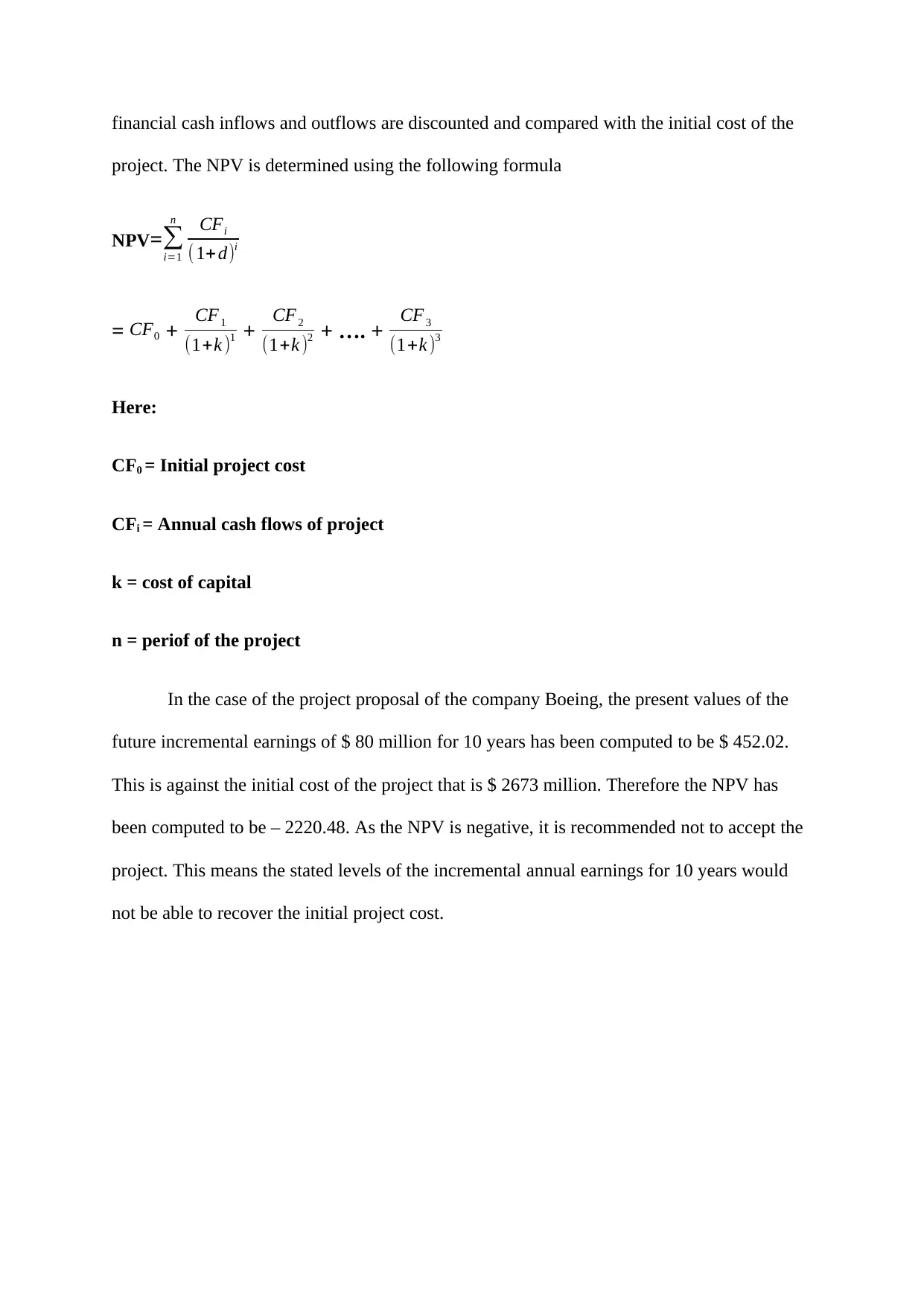Comprehensive Capital Budgeting Project: Boeing Company Analysis
VerifiedAdded on 2022/09/24
|4
|586
|28
Project
AI Summary
This finance project evaluates a capital investment proposal for the Boeing Company, applying key capital budgeting techniques. The project calculates the opportunity cost, determined to be $1283.45 million, considering the potential interest lost over 10 years. The payback period analysis reveals that the initial project cost of $2673 million would not be recovered within the 10-year timeframe, leading to a recommendation against the project. Furthermore, the net present value (NPV) calculation, with a negative result of -$2220.48 million, reinforces the recommendation to reject the project, as the projected incremental earnings are insufficient to offset the initial investment. The analysis uses data from the provided assignment brief and references academic sources to support the financial recommendations.
1 out of 4











![[object Object]](/_next/static/media/star-bottom.7253800d.svg)